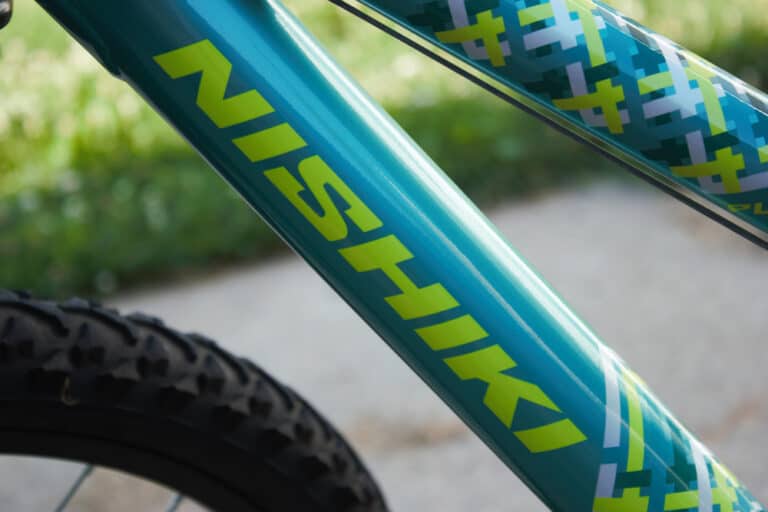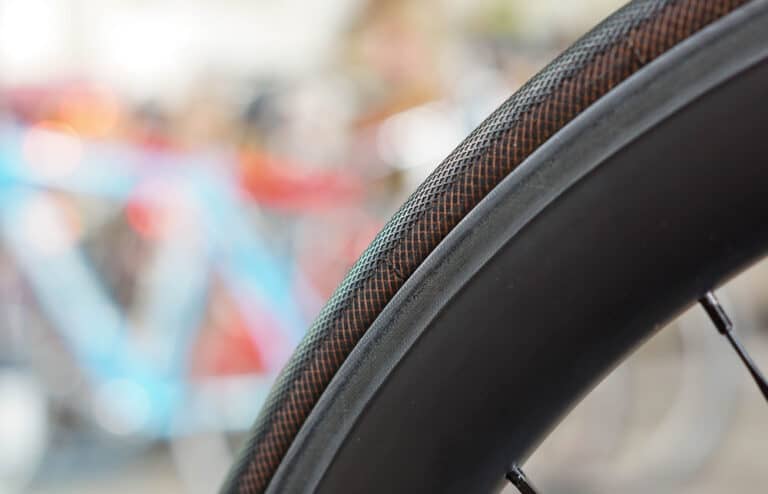Mountain Bike Vs. Road Bike: Which Is Better?

Avid bikers will tell you that comparing mountain bikes to road bikes is akin to comparing kayaking and snowboarding; it is two entirely different sports. However, it is still a worthy comparison as many newbies are faced with the decision; should I get a road bike or a mountain bike? Like many hobbies, biking can be a pricey endeavor, and if you can only afford one, which bike do you pick?
Mountain bikes are built specifically with off-road in mind and can take the punishment of rugged terrain, large jumps, and technical tracks, while road bikes are built for paved roads. Road bikes are lightweight, slim, and aerodynamic, making them optimal for fast, long-distance road biking.
While mountain bikes can look similar to road bikes at first glance, except for the obvious difference in the wheels, there are many more differences. Not only does the physical appearance of these bikes differ, but so do their function, purpose, and ride experience. Let’s investigate.
Mountain Bike Vs. Road Bike: A Comparison
In order to make an informed decision between mountain bikes and road bikes, it’s important to consider all aspects of the sport. Our in-depth comparison explores the differences between these two highly polarized bikes and the differences and similarities of the sport to the rider.
Mountain Bike Vs. Road Bike: Purpose
Before we start comparing the components, benefits, and other factors of mountain and road bikes, let’s first look at each purpose.
Mountain Bike
As the name suggests, mountain bikes are made for riding in the mountains, or in broader terms; off-road. Mountain bikes are built to handle the ruggedness of off-road trails and keep riders stable while doing jumps, turning corners, or riding on loamy soil. As the trails are unpredictable and change with the weather, mountain biking is an exciting sport for the adrenaline junkie.
Road Bike
Road bikes are built for the long open road. There are different kinds of road bikes, each with a slightly different purpose, but the original purpose of road bikes was racing. Hence, road bikes can go much faster and at greater distances than mountain bikes.
Since road bikes are made for riding on roads, they are perfect for commuting to work, friends, or local stores for grocery shopping. Not only will riding your bike save you money and keep you fit but commuting with road bikes will be more comfortable than mountain bikes as they are lighter and better suited for roads.
Mountain Bike Vs. Road Bike: Components Of Bike
The most striking difference between mountain and road bikes, even for the untrained eye, is their anatomy. While both types of bikes have the same components, they are both bikes after all; there are deviations to accommodate their different purposes.
Mountain Bike Components:
- Frames – Mountain bikes take a beating on rugged terrain and need a strong, heavy frame to handle the impact of jumps and speeding over rocks, roots, and potholes. Therefore, the frames of mountain bikes are sturdy and bulky. The frames of full-suspension bikes differ from hardtails due to the suspension at the back.
- Wheels & Tires – Mountain bikes have slightly smaller wheels than road bikes to improve stability, but the tires are the biggest difference. Mountain bikes have wider tires with knobs and deep tread patterns to improve traction and provide grip on uneven terrain. Tires have a lower pressure which further improves grip and helps prevent punctures. However, many mountain bikers use puncture-resistant tubes.
- Handlebars – Long and straight, the handlebars of mountain bikes have one or two different positions and offer stability for tricky terrain.
- Pedals – The pedals of mountain bikes are flat, with sharp protruding edges that provide grip for your shoes.
- Suspension – Some mountain bikes have front suspension only, called hardtails, while full-suspension mountain bikes have front and rear suspension.
Mountain Bike Subtypes:
- Downhill/Gravity
- Cross Country (XC)
- Enduro/All-mountain
- Trail
Road Bike Components:
- Frames – the frames of road bikes are lightweight and aerodynamically designed for faster speeds. Frames are often made from carbon fiber, titanium, or aluminum.
- Wheels & Tires – Road bikes have bigger wheels with thin, narrow tires. The tread is non-existent or very shallow, and the tire pressure of road bikes is two to three times higher than that of mountain bikes. All these factors create an aerodynamic bike that glides over the road with less resistance and greater speeds.
- Handlebars – During long rides, your hands and arms can get tired. Road bike handlebars are curved, offering many different hand positions to reduce strain.
- Pedals – Old-school Road bikes have straps on the pedals to secure your feet, but most newer road bikes have small pedals with clips that attach to the corresponding clip of cycling shoes. This prevents your feet from slipping and ensures steady and proper foot placement, which is crucial for long rides and races.
- Suspension – While some road bikes have front suspension, most have no suspension as it is not really needed for the road. As a result, if there are any bumps in the road, you will surely feel them!
Road Bikes Subtypes:
- Touring
- Endurance
- Ultralight
Mountain Bike Vs. Road Bike: Speed
There is a stark contrast between mountain and road bikes’ speeds. As you may have guessed, road bikes are faster, but by how much?
Mountain Bike
Speed is not part of the allure of mountain bikes. Mountain bikes are sluggish and must be strong enough to withstand sharp turns, jumps, and sketchy terrain. Many components are re-enforced, adding to the overall weight. As speed is not a priority, frames are heavier and stronger.
The average speed of a mountain bike is 10mph. It is worth noting that speed will be influenced by the weight and skill of the rider, as well as weather conditions. Naturally, downhill speeds will be faster.
Road Bike
Road bikes are considerably faster than mountain bikes. After all, it is built for speed with its lightweight frame and aerodynamic design. The average speed of a road bike is 16-20mph.
While road bikes are often considered boring compared to mountain biking, there is something riveting and exhilarating about the speed of road biking.
Mountain Bike Vs. Road Bike: Riding Posture
Due to the difference in design and the terrain of the bikes, the riding position of mountain bikes differs from road bikes. Let’s have a look:
Mountain Bike
The shape of the frame and the straight handlebar create an upright riding position. An upright position lowers the rider’s center of gravity and creates more stability, which is more suited for the terrain.
Road Bike
The handlebars of road bikes are dropped, and most handlebars are curved, creating a hunched
posture. This forward-leaning riding position is more aerodynamic and more comfortable for long rides as you are stretched out, and there is less strain on your back.
Mountain Bike Vs. Road Bike: Comfort & Convenience
Naturally, it stands to reason that mountain bikes will be more comfortable on off-road paths while road bikes will be more comfortable on the road, but how do they compare?
Mountain Bike
The sturdy frame, suspension, and wider saddle make for a more comfortable ride for heavier or overweight riders. While the wide saddle is generally more comfortable off-road and for shorter road trips, it can be very uncomfortable over long distances.
The handlebar of a mountain bike offers the rider minimum hand positions, which is fine for mountain biking but can cause strain on your hands and arms when riding for extended periods.
When it comes to convenience, it will depend on how close you are to mountain biking trails. Mountain biking can become inconvenient if you need to drive to the nearest track. On the other hand, you can ride mountain bikes both off-road and on the road.
Road Bike
Road bikes are best used on well-paved roads. The hard, thin wheels and lack of suspension ensure that you feel the tiniest bump in the road, so if the road is poorly paved and scattered with potholes, a mountain bike will be more comfortable.
The narrow saddle and thin frame are more comfortable over long distances but can be uncomfortable for heavier riders and newbies. The handlebar of road bikes is more comfortable than mountain bikes, as it offers about six different hand positions to combat hand strain.
Unless you live in the countryside, you can bike from home to wherever you want, making road biking very convenient. There is no need to drive to trails; simply get on your bike and start riding!
Mountain Bike Vs. Road Bike: Terrain & Weather
While the terrain near you will determine the best bike, weather plays a role in how often you bike and how tough your rides will be.
Mountain Bike
When it comes to both terrain and weather, mountain bikes are more versatile. The sturdy frame, short handlebar, and suspension offer a stable ride off-road but can handle short-distance road biking equally well. While road bikes do much better, a mountain bike won’t be damaged by road biking.
As many mountain bike tracks are in nature, often under tree canopies, strong winds don’t impact your ride or performance much. While riding in the rain can be uncomfortable, the loam after rain makes for a great riding experience! On hot summer days, you will be protected from the scorching sun by the trees.
Road Bike
While you can ride a mountain bike on rugged terrain and the road, with road bikes, you are limited to roads.
Road biking is much more pleasant when the weather is calm. The road offers no protection against the sun, rain, and wind. Tough windy conditions can make riding extremely strenuous or near impossible, as the riders of the Cape Argus – 2017 will tell you!
Mountain Bike Vs. Road Bike: Cost
The cost of a new hobby will determine whether or not it is accessible to you at the moment, so let’s see how the costs of mountain bikes and road bikes compare:
Mountain Bike
Considering the strong frame and front or full suspension, you would expect a mountain bike to be more expensive than a road bike. However, mountain bikes are actually less expensive. This is somewhat due to the cost of lightweight materials used for road bikes and the fact that mountain biking is more about the rider’s skills than what the bike can do. A skilled mountain biker can do magic on a mid-range mountain bike.
Naturally, prices of bikes vary greatly, not only between brands but also between entry-level and high-end bikes. You can anticipate paying between $500 and $10,000. However, the best top-of-the-range mountain bikes tend to be more expensive than the best road bikes.
You also need to consider maintenance costs along with the bike’s price. Mountain bike parts are generally cheaper than road bike parts, and as mountain bikes are more durable, replacing the parts won’t be a frequent occurrence.
However, if you drive to trails, there are additional costs, like fuel. You will also need a bike rack fitted to your car.
Road Bike
Two things matter when it comes to road bikes; the weight of the bike and how aerodynamic it is. Similar to other sports where weight matters, like backpacking or trekking, price is often inversely proportional to the bike’s weight. Manufacturers go to great lengths to build road bikes that are lightweight and aerodynamic, using specialized components and expensive materials.
Road bikes can cost from $800 all the way up to $15,000 or more.
Mountain Bike Vs. Road Bike: Apparel & Gear
Along with a bike, you will also need appropriate apparel and gear. While you can get away with fitness apparel when riding for fun, you will quickly notice the benefits of specialized riding gear.
Mountain Bike
Mountain bikers wear loose-fitting pants over tight, padded short called chamois. While the outer pants are loose-fitting, they are not so loose to hook on gears or bike parts. Mobility and freedom of movement are crucial for mountain biking, and the tops and jerseys are spacious at the shoulders, often with raglan sleeves.
Apparel is made from moisture-wicking fabric, and as mountain bikes are off-road, there is no need for reflective strips on the clothing. Many mountain bikers wear backpacks, so tops are often pocketless.
Other gear includes:
- shoulder and knee pads, especially for beginners
- a strong helmet
- a neck brace for more extreme mountain biking
Road Bike
Road bike apparel is moisture-wicking and tight-fitting to improve aerodynamics. While road bikers also wear padded chamois, the pants are more padded than those for mountain biking. In addition, no other pants are worn over.
Tops are slightly loose-fitting but still tight, with two or three elasticated pockets at the back for snacks or essentials. Reflective strips are prevalent across all apparel pieces to warn cars and other vehicles.
Mountain Bike Vs. Road Bike: Skills & Muscle Use
Mountain biking and road biking are distinctive sports requiring different physical and mental skills. Unsurprisingly, each sport uses a different set of muscles too.
Mountain Bike
Mountain biking is both anaerobic and aerobic and requires strength, coordination, and balance. As mountain biking is very technical, it is more mentally demanding than physically demanding, requiring your full concentration on the trail ahead.
While you use the same leg muscles as road biking or any other type of biking, mountain biking also works your upper body. It is a full-body workout! Muscles include:
- Leg muscles – quads, calves, hamstrings, and glutes to pedal and move the bike forward
- Core – abdomen and back muscles are used for balance
- Biceps, triceps, and pectoral muscles provide stability
- Forearm muscles are used for gripping, steering, and braking
Road Bike
In contrast to mountain biking, road biking is fully aerobic and all about stamina and endurance. You are against yourself, beating your previous personal records, top speeds, and distance. Road biking is more physically demanding than mental, and it can be quite thrilling to push yourself to do better with each ride.
Road biking works the following leg muscles:
- Quadriceps
- Hamstrings
- Calves
- Glutes
- Hip flexors
Mountain Bike Vs. Road Bike: Mental Health Benefits
It is a well-known fact that exercise greatly benefits our physical and mental health. Biking is particularly beneficial to our mental health. While biking will positively affect your mental and emotional well-being, mountain biking improves mental health differently than road biking.
Mountain Bike
When riding off-road, you need to concentrate on the everchanging path in front of you. The slightest distraction can send you hurling into nearby bushes and possibly injure yourself.
The mental focus that mountain biking requires is extremely beneficial for managing stress. For the duration of your ride, all worries and problems take a backseat and fade away, giving your mind breathing space.
Often, problems seem unsolvable, but solutions flow and seem clearer after some time away to view things from a new perspective.
Road Bike
The repetitive motions that many a mountain biker finds boring about road biking is, in fact, where the mental health power lies.
When the body is in a flow, repeating motions on “autopilot,” the mind does not need to concentrate on the actions of the body and is free to wander. While, at first, this can seem detrimental as you are now free to overthink and worry without disruption, sometimes your mind needs time to think and work through problems causing you stress. After a long ride, your mind will be calmer.
Not only does road biking reduce stress by clearing your mind, but it also allows you to appreciate the scenery and zone out. For those struggling to sit still and meditate, road biking is a great alternative that provides the same benefits.
Mountain Bike Vs. Road Bike: Sociability
If you enjoy social riding, you may be interested in knowing how mountain biking compares to road biking in this regard. Let’s find out!
Mountain Bike
Similar to technical hiking, it is more fun in groups. Not only is it great to have people around in case you injure yourself, but your epic turns, and shreds won’t be nearly as cool if there’s no one to witness them. Did it even happen?
On the other hand, since many trails or single-track and you need to concentrate on riding, mountain biking is more of a solo activity while it’s happening. Socializing happens before and after biking.
Road Bike
Road bikes are great for socializing! Since road biking does not require nearly as much concentration as mountain biking, it is easy to chat with your comrades.
Road bikes are built to ride great distances, which means you can ride much further than a mountain bike. It is not uncommon for a group of roadies to go on a Sunday outing to a coffee shop or café in a nearby, picturesque small town, have brunch, and bike back.
Mountain Bike Vs. Road Bike: Risk Factors
Most sports, especially the adventurous ones, come with some risk. The risk is part of the fun! However, your tolerance to risk will influence the type of sport you choose to engage in.
Mountain Bike
While it may appear that mountain biking is more dangerous than road biking, some tracks can be quite intimidating; it is not entirely true. The biggest risk you face when mountain biking is falling and breaking a few bones.
However, there are different levels of mountain biking, and very experienced bikers mostly do the dangerous downhill tracks you may have seen on YouTube. For the ordinary mountain biker, there are a variety of trails to suit your skill level, and you can expect less severe injuries like scrapes, cuts, and bruises.
Simply put, if you hurt yourself, it is likely your own fault.
Road Bike
In contrast, road biking can be quite nerve-wracking depending on how the roads are structured and whether or not you are riding on a dedicated bike lane.
Unfortunately, if there is no bike lane, you share the road with cars, motorbikes, and other vehicles and face the real, potentially fatal danger of being hit by a car.
How To Choose Between A Mountain Bike And A Road Bike
Now that you know the differences between mountain and road bikes choosing the bike for you should be clearer. If you find yourself still struggling to make a firm decision, consider the following:
- Your surrounding area. Do you live in a rural area with poor roads and many potholes? Are there any bike lanes? How close are the nearest MTB trails, and are they suitable for your skill level?
- Convenience. Do you want to be able to ride from your home to your destination, or are you willing to drive to a nearby track? Do you have your own car or rely on public transport, friends, and Ubers?
- Your social circle. Do you have any friends that ride? Do they have mountain bikes, road bikes, or both? If you wish to ride with friends, getting the same bike as most of your social circle may make more sense.
- Why do you want to start biking? Do you want to save money on fuel by commuting to work or grocery stores? Do you want to improve your fitness level or lose weight? Do you want to bike for fun and adventure? Alone or with friends?
- Your fitness and adventure level. How adventurous are you? Do you find the idea of off-road biking terrifying or exciting?

Conclusion
Choosing between a mountain bike and a road bike can be tough. While the two bikes differ greatly, they complement each other. Road bikes build stamina and endurance that will improve the quality of your mountain biking, while mountain biking improves balance and coordination.
For this reason, many enthusiasts invest in and ride road and mountain bikes. However, if you need to choose, consider the bike you will enjoy and use the most.







